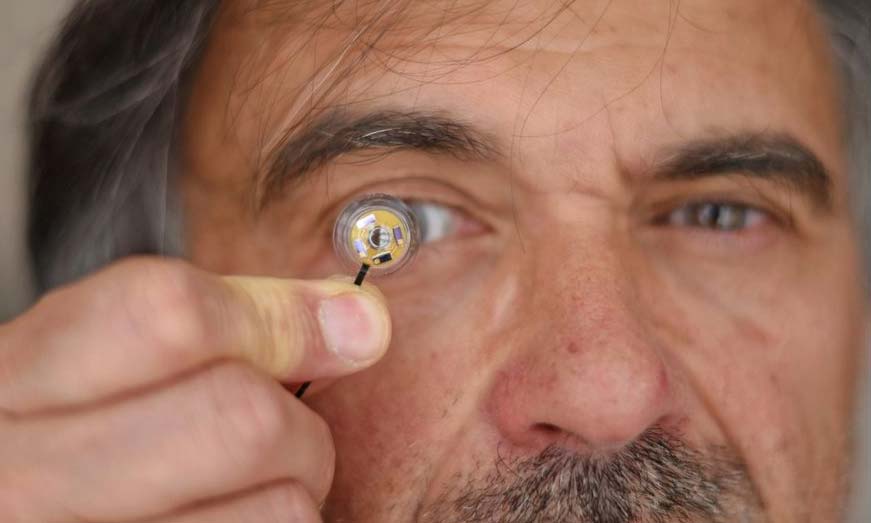
Jean-Louis de Bougrenet de la Tocnaye and the first stand-alone contact lens with a flexible micro battery.
The Optics Department at IMT Atlantique is headed by Professor Jean-Louis de Bougrenet de la Tocnaye and the Flexible Electronics Department at the Centre Microélectronique de Provence Georges Charpak (Mines Saint Etienne) is headed by Professor Thierry Djenizian.
The two departments are currently working together to design an oculometer embedded in a scleral contact lens. They have recently created the first autonomous contact lens incorporating a flexible micro-battery.
“Storing energy on small scales is a real challenge,” says Djenizian.
This battery made it possible to continuously supply a light source such as a light-emitting diode (LED) for several hours. A partnership with the contact lens manufacturer LCS has enabled the first elements of this new type of intelligent contact lens to be encapsulated (the LED can be easily integrated into the contact lens if necessary).
“This first project is part of a larger and very ambitious project aimed at creating a new generation of oculometers linked to the emergence of augmented reality helmets that have given rise to new uses (man-machine interfaces, cognitive load analysis, etc.). This opens up huge markets, while at the same time imposing new constraints on precision and integration,” says de Bougrenet de la Tocnaye.
The battery integrated within the lens will complement and power other functions being developed at IMT Atlantique, such as RF communication (wireless function) and particularly optical detection of gaze direction. The applications are vast, ranging from health (surgical assistance) to automotive (driving assistance) and concern the emerging connected objects sector.
This project will also be an opportunity to integrate the latest advances in graphene-based flexible electronics in particular, which will make it possible to work with transparent materials, a great advantage in the case of a contact lens.
This innovation illustrates a key function of augmented human beings (assisted vision), a biosensory paradigm (e.g. bio-acceptability, autonomy, computational complexity, communication systems, micro-battery etc.).
This project will involve numerous collaborations, including one with the Institut de la Vision in Paris, for a visual assistance device for the blind.




